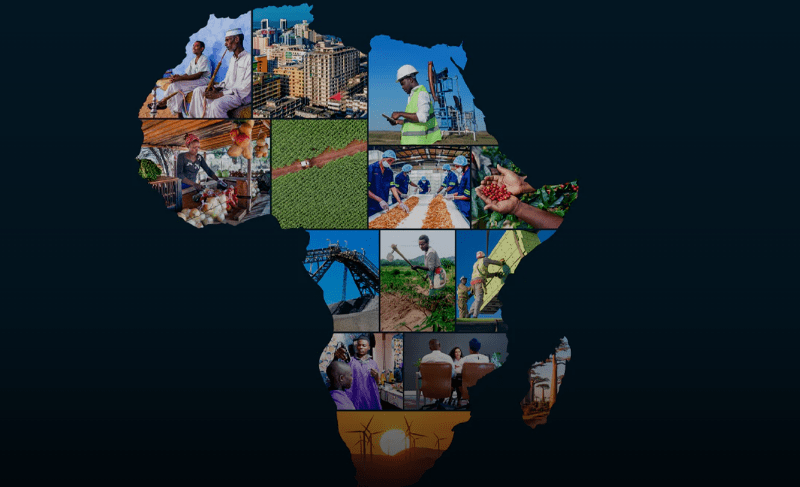Africa is home to the world’s youngest and fastest-growing population, burgeoning cities, and bold innovations in everything from fintech to clean energy. With its population expected to nearly double to 2.5 billion people by 2050, the continent presents myriad opportunities for robust, inclusive growth that harness its rich natural resources and abundant human potential to increase prosperity not only in Africa but around the world.
These strengths and assets present a chance for the continent to vastly improve its productivity and reverse the economic deceleration it endured from 2010 to 2019. GDP growth fell 35 percent over that period—and then the COVID-19 pandemic took hold, followed by the Russian invasion of Ukraine. Those events set off shifts that are still working their way through the global economy. Today, 60 percent of Africa’s population lives in poverty, the result of per capita income growth that has averaged just 1.1 percent a year for the past several decades.Yet the continent-wide statistics obscure successes in many of its constituent countries that can serve as models to establish productivity as the foundation of Africa’s economic growth. Over the past decade, certain countries, cities, sectors, and companies have been beacons of innovation, productivity, and growth—there is no “one Africa.” In those beacons lie lessons and innovations that can reinvigorate the African economy. Our new research indicates that abundant growth and development are still possible in Africa, still happening—and, more than ever, vital for the welfare of the world.Africa’s growth has downshifted since 2010 after a promising opening to the millenniumAfrica entered the 21st century with a promising burst of economic growth that persisted for a decade before returning to the slow pace it experienced in the 1990s. From 2000 to 2010, real GDP grew at an average rate of 5.1 percent annually, up from an annual average of only 2.5 percent in the previous decade. Growth slowed to 3.3 percent per year between 2010 and 2019.While the continent’s GDP did increase faster than its population, the absolute number of Africans living in poverty went up by 30 million. That population growth helps explain the contrast between average annual GDP per capita growth of 5 percent and 8 percent, respectively, in India and China but only 1 percent in Africa over the 30-year period from 1990 through 2019.There is no ‘one Africa’—the continent’s recent slowdown masks divergence across countriesAlmost half of Africa’s people live in countries where GDP growth between 2010 and 2019 exceeded the continent’s average growth rate of 4.2 percent since 2000. These countries, which fall into clusters we call “consistent growers” and “recent accelerators,” were largely midsize economies that benefited from higher-than-average increases in investment, exports, and urbanization, which increased productivity. These countries offer valuable models for the continent to emulate.The other half of the African population lives in countries that grew more slowly over the past decade, including the continent’s three largest economies—Egypt, Nigeria, and South Africa—as well as ten of the smallest countries on the continent.Africa’s economies are shifting rapidly from agriculture and extraction to services, but productivity still lagsThe African economy has undergone a profound structural shift to services over the past 20 years, as people left work in the fields to take jobs in trade and other services in cities. Reflecting that shift, employment in services increased from 30 percent to 39 percent over that period, although in 2019, half the African workforce remained in agriculture. Going forward, the continent has the human capital and resources it needs to propel growth and increase productivity across all sectors, starting with the services sector. Services have secured their place as the major driver of the continent’s economic output, contributing 56 percent in 2019 compared to 50 percent in 2000. The sector presents significant opportunities for African countries to boost economic output and job creation—but only if productivity improves. The real productivity of Africa’s services sector, at $7,200 in 2019 compared to $8,900 in India, $17,700 in Latin America, and $20,900 in China, is the lowest of any region in the world. It is critical that Africa improve the productivity not only of its services sector but also of its industrial sector. And with half of Africa’s workforce still employed in farming, boosting agricultural productivity and farmer incomes remains critical.
